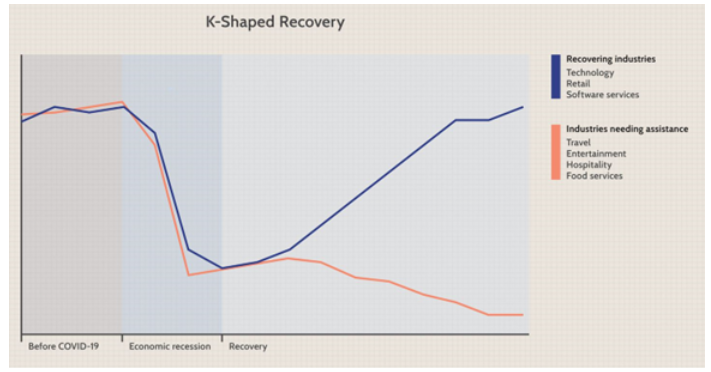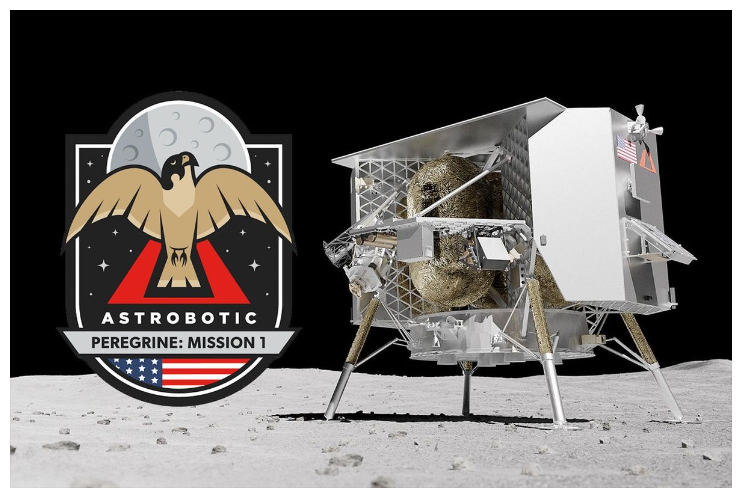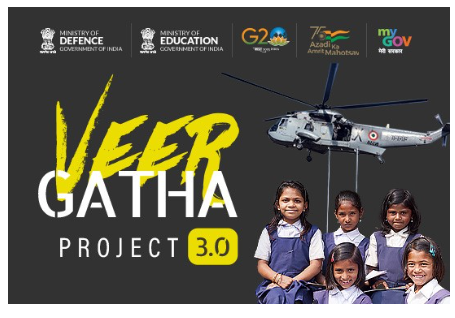Wednesday, 10th January 2024
SBI Research Challenges K-Shaped Economic Recovery Narrative
In News: The State Bank of India's Economic Research Department reports a decrease in income inequality in India, attributing it to a larger tax base and a shift of taxpayers from lower to higher income tax brackets.

Understanding K-Shaped Recovery
A K-shaped recovery is characterized by disparate economic rebound trajectories among various sectors post-recession, resulting in a divergence resembling the arms of the letter "K."
Factors Influencing K-Shaped Recovery
- Creative Destruction in the Economy
- The emergence of new technologies and industries replacing older ones during a recession can contribute to a K-shaped recovery.
- Public Policy Responses and Income Inequality
- Differential impacts of monetary and fiscal policies on various segments of the economy can lead to income inequality.
- Varied Initial Recession Impact
- The differing effects of the initial recession on different sectors contribute to the K-shaped recovery pattern.
Income Inequality in India: Insights from UNDP Report
- Skewed Income Distribution
- The top 10% of the population receives 57% of national income, with the top 1% securing 22%, indicating a highly unequal distribution.
- Wealth Inequality
- The top 10% controls 65% of the nation's total wealth, showcasing pronounced gaps in wealth distribution.
- Post-2000 Rise in Wealth Inequality
- Evidence suggests a substantial increase in wealth inequality, particularly in the post-2000 period.
Insights from SBI Report on Income Transition
- Positive Migration to Higher Income Brackets
- Over 36.3% of taxpayers transitioned from lower to higher income tax brackets between 2013–14 and 2021–22, resulting in a 21.3% increase in income.
- Increased Female Tax Filers
- Female tax filers constitute around 15% of individual tax filers, with certain states showing a higher share of female participation.
- Contradicting K-Shaped Recovery Claims
- The report challenges the notion of a K-shaped recovery, asserting that growth is occurring across all income classes, reducing skewness and fostering income convergence.
Conclusion and Decline in Income Inequality
The SBI report concludes by dispelling the idea of a K-shaped recovery and highlights a significant decline in income inequality, supported by a reduced Gini coefficient from 0.472 to 0.402 during FY14-FY22.
Source: IE
Supreme Court's Verdict on Adani-Hindenburg Dispute
In News: The Supreme Court of India has recently delivered its verdict on a set of petitions related to accusations made by the US-based firm, Hindenburg Research, against the Adani group.
Supreme Court's Verdict on Adani-Hindenburg Dispute and SEBI's Inquiry
Background
- Hindenburg's Accusations
- In January 2023, Hindenburg Research leveled allegations of stock manipulation, accounting fraud, and the use of improper tax havens and shell companies by the Adani group, significantly impacting the stock market.
- Petitions and Arguments
- Various petitions sought a court-monitored investigation, citing implications for national security and the economy. Allegations included questioning SEBI's competency and independence in conducting a fair and impartial probe.
- Counter Arguments
- The Adani group refuted the accusations, attributing them to false information and vested interests. SEBI defended its competence and independence in handling the investigation.
Recent Supreme Court Judgment
- The Supreme Court ruled in favor of the Adani group and SEBI, dismissing the transfer of the probe to other investigative bodies.
- The court emphasized the need for exceptional circumstances to exercise the power of transferring investigations, deeming the Hindenburg report unreliable and aimed at influencing the market through selective and distorted information.
- While upholding SEBI's integrity, the Court directed an expedited completion of SEBI's investigation within three months.
Understanding Short Selling
- About
- Short selling involves an investor borrowing a stock, selling it in the market, anticipating a future price decline, and aiming to repurchase the same asset at a lower price later.
- Regulation of Short-selling in India
- SEBI's Guidelines
- SEBI allows short-selling for investors across all categories but prohibits naked short-selling.
- All investors must fulfill their duty of delivering securities during the settlement period.
- Naked Short Selling
- This occurs when an investor sells stocks without arranging to borrow them.
- Institutional investors must disclose upfront if a transaction is a short sale, and retail investors can make a similar disclosure by the trading day's end.
- Short Selling in F&O Segment
- SEBI permits short selling for securities in the Futures & Options (F&O) segment, subject to periodic reviews of eligible stocks.
- Futures involve an obligation to buy/sell assets at an agreed price on a set date, while options grant the right to buy/sell assets by a certain date with a premium paid upfront, limiting potential losses.
- SEBI's Guidelines
|
UPSC Previous Year Questions Prelims (2010) Q. In the parlance of financial investments, the term ‘bear’ denotes (a) An investor who feels that the price of a particular security is going to fall (b) An investor who expects the price of particular shares to rise (c) A shareholder or a bondholder who has an interest in a company, financial or otherwise (d) Any lender whether by making a loan or buying a bond Ans: (a) |
Source: TH
PRITHvi VIgyan Scheme
In News: The Union Cabinet has recently granted approval to the Ministry of Earth Sciences for the comprehensive scheme "PRITHvi VIgyan (PRITHVI)."
Understanding the "PRITHvi VIgyan (PRITHVI)" Scheme
About
- Holistic Ministry Initiative
- PRITHVI is an overarching scheme initiated by the Ministry of Earth Sciences (MoES) spanning from 2021 to 2026.
- Comprehensive Sub-schemes
- The scheme encompasses five ongoing sub-schemes, namely:
- ACROSS: Atmosphere and Climate Research-Modelling Observing Systems & Services.
- O-SMART: Ocean Services, Modelling Application, Resources and Technology
- PACER: Polar Science and Cryosphere Research
- SAGE: Seismology and Geosciences.
- REACHOUT: Research, Education, Training and Outreach.
- The scheme encompasses five ongoing sub-schemes, namely:
- Addressing Earth System Sciences
- PRITHVI comprehensively addresses the five components of Earth System Sciences: atmosphere, hydrosphere, geosphere, cryosphere, and biosphere.
- This integrated approach aims to enhance understanding and deliver reliable services for the country.
Objectives
- Long-term Observations
- The primary goal is to augment and sustain long-term observations of the Earth's vital signs, covering the atmosphere, ocean, geosphere, cryosphere, and solid earth.
- Modelling for Hazards and Climate Change
- Development of modelling systems is emphasized to understand and predict weather, ocean, and climate hazards while comprehending the science of climate change.
- Exploration of Polar and High Seas Regions
- PACER focuses on the exploration of polar and high seas regions to discover new phenomena and resources.
- Technology Development for Oceanic Resources
- A crucial objective is to develop technology for exploring and sustainably harnessing oceanic resources for societal applications.
- Knowledge Translation for Societal Benefit
- The scheme aims to translate knowledge and insights from Earth systems science into services for societal, environmental, and economic benefit.
Benefits for India
- Advanced Warning Services
- PRITHVI provides advanced warning services for natural disasters like cyclones, floods, heatwaves, and earthquakes, facilitating prompt and effective disaster management.
- Precision in Weather Forecasting
- The scheme ensures precise weather forecasts for both land and oceans, enhancing safety and minimizing property damages in adverse weather conditions.
- Exploration of Earth's Poles
- PRITHVI extends its reach to explore the three poles of the Earth—Arctic, Antarctic, and Himalayas—facilitating valuable insights and knowledge about these regions.
- Technology Development for Oceanic Resources
- The scheme encourages the development of technology for exploration and sustainable harnessing of oceanic resources, aligning with modern advancements in Earth Science.
Source: PIB
Supreme Court Legal Services Committee
In News: Supreme Court Justice BR Gavai has been recently appointed as the Chairman of the Supreme Court Legal Services Committee (SCLSC).
Understanding the Supreme Court Legal Services Committee (SCLSC)
Background
- Origins of Legal Aid Program
- The concept of a legal aid program was initially proposed in the 1950s, gaining formal establishment in 1980 with a national committee chaired by Justice PN Bhagwati.
- Committee for Implementing Legal Aid Schemes
- The Committee for Implementing Legal Aid Schemes, formed in 1980, took charge of monitoring legal aid activities across India.
About the SCLSC
- Constitution and Mandate
- The Supreme Court Legal Services Committee (SCLSC) is constituted under Section 3A of the Legal Services Authorities Act, 1987.
- Its purpose is to provide "free and competent legal services to the weaker sections of society" in cases under the jurisdiction of the Supreme Court.
- Composition
- The committee includes a sitting Supreme Court judge as the chairman, appointed along with other members possessing specified qualifications.
- Both the chairman and members are nominated by the Chief Justice of India (CJI), who can also appoint the Secretary to the Committee.
- Members
- SCLSC consists of a chairperson and nine members nominated by the CJI.
- The Committee is empowered to appoint officers and employees as prescribed by the Centre, in consultation with the CJI.
Constitutional Provisions Mandating Legal Services
- Article 39A
- The constitutional need for legal services is emphasized in Article 39A, directing the state to ensure that the legal system promotes justice and provides free legal aid to ensure justice is not denied based on economic or other disabilities.
- Articles 14 and 22(1)
- Articles 14 and 22(1) obligate the state to ensure equality before the law and a legal system promoting justice based on equal opportunity, reinforcing the need for legal aid.
Legal Services Authority Act, 1987
- Enactment and Objectives
- Enacted in 1987, the Legal Services Authorities Act establishes a statutory foundation for legal aid programs, aiming to provide free and competent legal services to eligible groups.
- NALSA
- The Act led to the creation of the National Legal Services Authority (NALSA) in 1995 to monitor legal aid programs, lay down policies, and disburse funds for implementation.
- State Legal Services Authorities
- State Legal Services Authorities (SLSA) were established in every state to implement NALSA's policies and directions, ensuring free legal services and conducting Lok Adalats.
- District Legal Services Authorities
- District Legal Services Authorities (DLSAs) and Taluk Legal Services Committees were formed at the district and taluk levels, organizing legal awareness camps and providing free legal services.
|
UPSC Previous Year Questions Prelims (2013) Q. With reference to National Legal Services Authority, consider the following statements:
Which of the statements given above is/are correct? (a) 1 only Ans: (c) |
Source: IE
GSAT-20 (GSAT-N2) Aboard SpaceX’s Falcon-9
In News: NewSpace India Limited (NSIL), the commercial subsidiary of the Indian Space Research Organisation (ISRO), is slated to launch GSAT-20 (GSAT-N2) using SpaceX's Falcon-9 in the year 2024.
Understanding GSAT-20
- High Throughput Satellite (HTS)
- GSAT-20 is a high throughput Ka-band satellite designed to offer high-speed broadband internet connectivity, digital video transmission, and audio transmission.
- Broadband Communication Needs
- Launched to address India's growing broadband communication needs, GSAT-20 provides comprehensive coverage across the country, including remote areas like Andaman and Nicobar Islands and Lakshadweep Islands.
- Impressive HTS Capacity
- This satellite boasts an impressive High Throughput Satellite (HTS) capacity, reaching nearly 48Gbps. It features 32 beams tailored to meet the service requirements of underserved areas, aiming to bridge connectivity gaps.
What is NewSpace India Limited (NSIL)?
- Government-Owned Company
- NewSpace India Limited (NSIL) is a wholly owned Government of India company, established on March 6, 2019, under the Companies Act, 2013. It operates under the administrative control of the Department of Space (DOS).
- Primary Responsibilities
- NSIL's primary responsibilities include enabling Indian industries to engage in high technology space-related activities, promoting and commercially exploiting products and services from the Indian space program.
- Major Business Areas
- Launch Vehicle Production
- Production of Polar Satellite Launch Vehicle (PSLV) and Small Satellite Launch Vehicle (SSLV) through industry collaboration.
- Space-Based Services
- Production and marketing of space-based services, including launch services and applications like transponder leasing, remote sensing, and mission support services.
- Satellite Building
- Building satellites, both communication and Earth observation, based on user requirements.
- Technology Transfer
- Transfer of technology developed by ISRO centers and units, along with constituent institutions of the Department of Space.
- Marketing Spin-Off Technologies
- Marketing spin-off technologies and products/services arising from ISRO activities.
- Consultancy Services
- Providing consultancy services in space-related domains.
- Launch Vehicle Production
NSIL's Successful Mission
In June 2022, NSIL achieved its first demand-driven satellite mission, GSAT-24, fully secured by Tata Play, a satellite television service. Currently, NSIL manages and operates 11 communication satellites in orbit.
|
UPSC Previous Year Questions Prelims (2018) Q. With reference to India’s satellite launch vehicles, consider the following statements
Which of the statements given above is/are correct? (a) 1 only Ans: (a) |
Source: TH
Peregrine Mission One
In News: The United States initiated the Peregrine Mission One, marking its initial endeavor to land on the Moon in over five decades.

Key Highlights of Peregrine Mission One
- American Lunar Exploration Revival
- The Peregrine Lander is anticipated to mark a significant milestone as one of the first American spacecraft to successfully land on the Moon since the conclusion of the Apollo program.
- Lunar Lander Construction
- Crafted by Astrobotic Technology, the Peregrine Lunar Lander, known as Peregrine Mission One, is a pivotal component of NASA's Commercial Lunar Payload Services (CLPS) program.
- NASA's CLPS Initiative
- Part of NASA's CLPS program, this lunar mission aligns with the agency's goal to invigorate a broader lunar economy.
- The initiative involves collaborations with various American companies for the transport of science and technology payloads to the lunar surface.
- Lunar Exploration and Technology Demonstrations
- CLPS contracts, formed under the collaboration with diverse American companies, aim to facilitate lunar exploration, experimentation, and technology demonstrations, laying the groundwork for upcoming human missions.
- Targeted Lunar Region
- The Peregrine Mission One is projected to touch down in the mid-latitude region of the Moon known as Sinus Viscositatis, or the Bay of Stickiness.
- Preparation for Artemis Program
- In addition to its individual objectives, this mission contributes to the groundwork for the Artemis program.
- Artemis, led by NASA, aims to return astronauts to the Moon by the end of this decade, including the historic landing of the first woman and person of color on the lunar surface.
- Artemis Vision
- The overarching Artemis program envisions establishing an Artemis Base Camp on the lunar surface and strategically positioning a Gateway in lunar orbit, fostering sustained human presence beyond Earth.
|
UPSC Previous Year Questions Prelims (2008) Q. What is the purpose of the US Space Agency’s Themis Mission, which was recently in the news? (a) To study the possibility of life on Mars Ans: (c) Q. Consider the following statements: The Mangalyaan launched by ISRO
Which of the statements given above is/are correct? (a) 1 only Ans: (c) |
Source: TH
The Chandubi Festival
In News: The Chandubi Festival was recently observed along the scenic Chandubi Lake in the state of Assam.

Chandubi Festival Overview
- Annual Celebration at Chandubi Lake
- The Chandubi Festival is an annual event spanning five days, commencing on the first day of the New Year, celebrated along the picturesque Chandubi lake in the state of Assam.
- Attractions at Chandubi Festival
- Key highlights of the Chandubi Festival include vibrant local folk culture, diverse ethnic cuisine, showcases of local handloom and traditional attire, and engaging activities like boating.
- Eco-Tourism Promotion
- The primary objective of the Chandubi Festival is to promote eco-tourism in this biodiversity hotspot of Assam, emphasizing the significance of preserving the waterbody.
- Conservation Focus
- With a focus on preserving the waterbody, the festival serves as a proactive measure to address the declining water levels of Chandubi lake over the years.
- Livelihood Generation
- An essential aspect of the festival is its role in generating livelihood opportunities for various tribes residing in the area, including Rabhas, Garos, Gorkhas, and tea tribes.
- These communities engage in selling diverse food items, homemade beverages, and traditional woven attire.
Key Insights about Chandubi Lake
- Origin During Earthquake
- Chandubi lake was formed as a result of a massive earthquake in 1897, making it a unique and historic water body in the region.
- Etymology
- The name Chandubi is a combination of two words, where 'Chand' translates to five, and 'Dubi' means sinking in the Khasi language.
- Economic Viability Transformation
- Originally a freshwater lake, Chandubi underwent transformation into an economically viable water body, sustaining various communities residing in its vicinity.
- Biodiversity Rich Wetland
- Chandubi lake stands as a prosperous wetland in the state, hosting diverse species of aquatic flora and fauna, contributing to the ecological richness of the region.
Source: HT
Sky Dew
In News: In response to escalating tensions with Hezbollah, Israel has recently deployed Sky Dew along the Lebanese border.

Sky Dew: A High-Altitude Threat Warning System
- Overview
- Sky Dew stands as a colossal balloon-like structure resembling an inflated aircraft, serving as a high-altitude observation balloon designed for threat detection.
- Aerial Threat Warning System
- This innovative technology operates as a detection radar blip, specifically crafted for identifying small unmanned aircraft and cruise missiles.
- Notably, Sky Dew ranks among the largest aerial threat warning systems globally.
- Collaborative Development
- The technology is a collaborative effort between Israel Defense and the U.S. company TCOM.
- The entire project received funding from the U.S. Department of Defense.
- Handover to Israel Air Force
- In 2022, the Israel Air Force officially took possession of the Sky Dew system, showcasing the successful fruition of the joint development.
- System Components
- Sky Dew comprises a blimp designed for high-altitude flight, equipped with radar and detection systems capable of scanning an extensive area in all directions.
- Radar Capabilities
- The radar on the balloon boasts an impressive observational range of 250 km, enabling the tracking of multiple targets, including those at low altitudes and within valleys.
- Operational Specifications
- With a carrying capacity of 7,000 pounds, Sky Dew operates at an altitude of 10,000 feet. Its distinctive advantage lies in its prolonged surveillance capability without the need for fuel replenishment or crew replacement.
Source: TOI
Sisal Plant
In News: A research team at Stanford University has discovered that a sisal-based material exhibits a higher absorption capacity compared to the materials commonly used in commercial menstrual pads.
Sisal Plant: A Profile
Plant Characteristics
- Xerophytic Nature
- The sisal plant is characterized as a xerophytic, monocarp, semi-perennial leaf fibre producer. Notably, it exhibits adaptations suited for arid environments.
- Leaf Features
- Its leaves, which can reach up to 2 meters in length, are thick, fleshy, and often adorned with a waxy layer—typical traits of xerophytic plants.
- Lifespan and Leaf Production
- With a lifespan of approximately 7-10 years, the sisal plant yields around 200-250 usable leaves during its productive period.
- Fibrous Potential
- Each leaf boasts around a thousand fibers, presenting versatile utility in the creation of ropes, paper, cloth, and potentially highly absorbent materials.
Climatic Conditions
- Adaptation to Arid Environments
- The sisal plant is well adapted to arid conditions, thriving in environments where water availability is limited, showcasing its xerophytic nature.
- Temperature and Rainfall Tolerance
- It can endure temperatures up to 40-45°C and flourishes with evenly distributed rainfall ranging from 60-125 cm.
- Preferred Soil Conditions
- Thriving in dry, permeable, sandy-loam soils enriched with liming materials (Ca and Mg), sisal can also grow in various soil types.
- In India, it prospers in light calcareous and gravelly soils with good drainage.
- Geographical Adaptation
- Sisal cultivation is well-established in regions like Odisha, Jharkhand, Maharashtra, parts of Bihar, the western part of West Bengal, and several southern states in India.
Propagation Methods
- Vegetative Propagation
- Primarily propagated through vegetative means, sisal plants are reproduced using 'bulbils' and 'suckers.'
Source: TH
Camptothecin
In News: Researchers at IIT Madras and IIT Mandi have used metabolic engineering to boost the production of the anti-cancer drug camptothecin (CPT) in Nothapodytes nimmoniana plant cells.
Significance in Cancer Treatment
- Crucial Drug Lead Molecule
- Camptothecin (CPT) holds prominence as a pivotal lead molecule for potent anti-cancer drugs such as Topotecan and Irinotecan.
- Topoisomerase I Inhibition
- Functioning as a potent topoisomerase I inhibitor, Camptothecin is primarily extracted from two plant sources—Camptotheca acuminata (native to Eastern Asia) and Nothapodytes nimmoniana (native to India).
Production Challenges and Conservation Concerns
- Geographical Origin
- Camptothecin is predominantly produced in the Southeast Asian region, with significant sources found in China and India.
- However, extensive deforestation and the impact of climate change have pushed these plants, particularly Camptotheca acuminata and Nothapodytes nimmoniana, into the endangered species category.
- Key Facts about Nothapodytes nimmoniana
- An endangered forest plant, it is distributed in regions including Sri Lanka, China, South East Asia, Taiwan, North Sumatra, Luzon Philippines, and India.
- Predominantly found in the Western Ghats of Maharashtra, Goa, Tamil Nadu, and Kerala in India, with additional sightings in Assam and Jammu and Kashmir.
- Native to India, specifically prevalent in the Western Ghats region.
- The allopathic medicine harnesses Nothapodytes nimmoniana for its production, as it contains the sought-after camptothecin (CPT), a renowned anticancer drug.
- Maximum reported amounts of CPT are derived from N. nimmoniana.
- Extraction involves nearly 1,000 tonnes of plant material to obtain 1 tonne of CPT.
- The International Union for Conservation of Nature has red-listed the plant due to a notable 20% decline in its population over the past decade.
Exploration for Medicinal Advancements
- Phytochemical, Biotechnological, and Pharmacological Aspects
- Given its rich source of CPT, Nothapodytes nimmoniana has been extensively explored for its phytochemical, biotechnological, and pharmacological aspects, contributing to advancements in medicinal research.
Source: TH
AI's Impact on Sovereignty: Redefining the Concept
In News: In 2023, a tumultuous global landscape marked by conflicts, environmental issues, and technological strides prompted a concerted effort to shape ethical AI governance and address pressing challenges.
UN's Ethical Framework for AI Governance: Guiding Principles
- Shaping Responsible AI Development
- The UN's commitment to an ethical framework serves as a cornerstone in steering the responsible and human-centric evolution of emerging technologies, particularly AI.
- Rooted in UNESCO Principles
- Derived from the principles outlined in the UNESCO declaration, this ethical framework serves as a comprehensive guide within the UN system for the governance and utilization of AI.
- Human Rights Focus
- At its core, the framework is built on an unwavering commitment to uphold, safeguard, and promote human rights and fundamental freedoms.
- The acknowledgment of individual dignity serves as a guiding principle to ensure AI technologies align with basic human rights.
- Diversity and Inclusiveness
- To counter biases and discriminatory practices, the framework underscores the critical importance of diversity and inclusiveness.
- It advocates for AI systems designed with inclusivity in mind, considering diverse perspectives, cultural contexts, and individual experiences to prevent the perpetuation of societal inequalities.
- Governance and Development Emphasis
- Extending beyond AI specifics, the ethical framework encompasses broader governance and development aspects.
- It calls for transparent, accountable, and participatory decision-making processes in AI development.
- Additionally, it advocates for AI to contribute to just and equitable development, ensuring benefits are shared across society.
Transformation of Territorial Sovereignty in the Digital Era: Implications
- Evolution of Territorial Sovereignty
- The digital age prompts a subtle yet profound shift in the principle of territorial sovereignty.
- Control over information and data becomes central, expanding traditional territorial boundaries to encompass control over digital mediums.
- Accumulation of Classified Data
- Digital sovereignty involves the accumulation and control of classified data, raising concerns about privacy, security, and potential misuse.
- In diplomacy, control over such data becomes a form of soft power, influencing global narratives.
- Disinformation Challenges
- The prevalence of disinformation, misleading content, and hate speech in the digital realm poses significant challenges to maintaining transparent and constructive international relations in diplomacy.
- AI's Role in Democratic Processes
- The growing threat of AI tools manipulating democratic processes is highlighted, risking manipulation of public opinion, elections, and undermining democratic principles.
- Threats to Privacy
- AI deployment, particularly in Big Data Analytics and the Internet of Things, poses threats to decisional and informational privacy.
- The capture of personal information for detailed profiling jeopardizes autonomy and privacy.
Digital Empires' Ongoing Conflict: Dynamics and Consequences
- Distinct Digital Models
- The analysis presents three distinct "digital empires": the US with a techno-optimistic model, China with a state-driven regulatory approach, and the EU prioritizing a human rights-based approach.
- Consequences of Conflict
- While AI offers potential benefits, unchecked techno-optimism could lead to neglect of ethical considerations, endangering privacy and democracy.
- The ongoing conflict between digital models points to an uncertain future.
Addressing Challenges: Paths Forward
- Transborder Governance of AI
- International frameworks for ethical AI development are imperative, transcending geographical boundaries.
- UN committees actively engage in discussions for global consensus on norms and regulations, recognizing the inadequacy of unilateral approaches.
- Digital Diplomacy's Vital Role
- The evolving dynamics of digital sovereignty necessitate a re-evaluation of traditional diplomacy.
- Digital diplomacy becomes integral in navigating challenges and leveraging digital technologies strategically for diplomatic objectives.
Conclusion: Striking a Balance in the AI Era
As the world grapples with AI challenges, achieving a delicate balance between progress and ethics is crucial. Global collaboration is paramount to navigate the uncharted waters of AI development and application, ensuring a harmonious technopolitical landscape.
Source: IE
Share the article
Edukemy’s Current Affairs Quiz is published with multiple choice questions for UPSC exams
MCQ
Get Latest Updates on Offers, Event dates, and free Mentorship sessions.

Get in touch with our Expert Academic Counsellors 👋
FAQs
UPSC Daily Current Affairs focuses on learning current events on a daily basis. An aspirant needs to study regular and updated information about current events, news, and relevant topics that are important for UPSC aspirants. It covers national and international affairs, government policies, socio-economic issues, science and technology advancements, and more.
UPSC Daily Current Affairs provides aspirants with a concise and comprehensive overview of the latest happenings and developments across various fields. It helps aspirants stay updated with current affairs and provides them with valuable insights and analysis, which are essential for answering questions in the UPSC examinations. It enhances their knowledge, analytical skills, and ability to connect current affairs with the UPSC syllabus.
UPSC Daily Current Affairs covers a wide range of topics, including politics, economics, science and technology, environment, social issues, governance, international relations, and more. It offers news summaries, in-depth analyses, editorials, opinion pieces, and relevant study materials. It also provides practice questions and quizzes to help aspirants test their understanding of current affairs.
Edukemy's UPSC Daily Current Affairs can be accessed through:
- UPSC Daily Current Affairs can be accessed through Current Affairs tab at the top of the Main Page of Edukemy.
- Edukemy Mobile app: The Daily Current Affairs can also be access through Edukemy Mobile App.
- Social media: Follow Edukemy’s official social media accounts or pages that provide UPSC Daily Current Affairs updates, including Facebook, Twitter, or Telegram channels.





